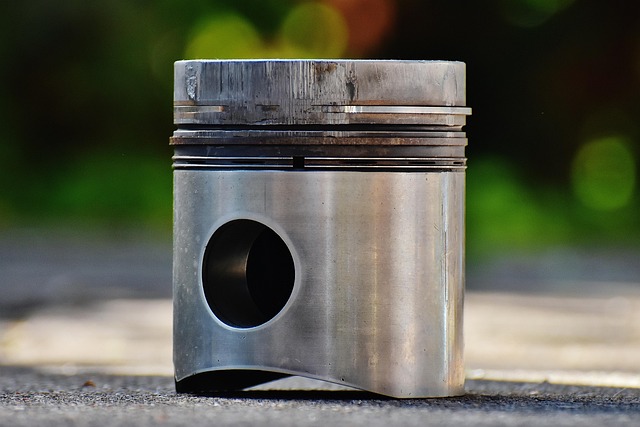Looking to register your car in California? This comprehensive guide breaks down the process step-by-step. From understanding vital requirements to securing necessary documents, you’ll learn how to ensure a smooth registration experience. A key component is performing a VIN verification, a crucial step for accuracy and legality. We’ll walk you through this and more, including choosing the right registration type and fee payment methods, culminating in your receipt of official registration papers.
- Understand California Vehicle Registration Requirements
- Gather Necessary Documents for Car Registration
- Perform VIN Verification: Steps and Importance
- Choose an Appropriate Registration Type and Fee Payment
- Submit Application and Receive Your Registration Papers
Understand California Vehicle Registration Requirements

Before registering your vehicle in California, it’s crucial to understand the state’s specific requirements for vehicle identification number (VIN) verification. The California Department of Motor Vehicles (DMV) mandates that all vehicles be registered with accurate and up-to-date information, including a valid VIN. This unique 17-character identifier serves as a crucial link between your vehicle and its history, ensuring safety standards are met.
A key step in the registration process involves conducting a VIN inspection to confirm the vehicle’s identity and condition. While traditional vin verification typically requires visiting a DMV office, California residents now have the option of using mobile vin verifier services. These innovative solutions allow for convenient and efficient VIN inspections right from your location, making it easier than ever to complete the registration process.
Gather Necessary Documents for Car Registration

Before you begin the registration process, ensure you have all the required documents ready. This includes your vehicle’s registration application form, which can be obtained from the California Department of Motor Vehicles (DMV). Additionally, you’ll need proof of identification and residency, such as a valid driver’s license, passport, or state ID card, along with utility bills or lease agreements that display your current address.
A crucial step in the preparation process is conducting a Vehicle Identification Number (VIN) verification. This can be done through various methods, including a traditional VIN inspection at a DMV office or opting for a convenient mobile vin verification service. The latter allows you to receive instant results while saving time and effort, ensuring that your vehicle’s history is accurately checked before registration.
Perform VIN Verification: Steps and Importance

Performing a Vehicle Identification Number (VIN) verification is a crucial step in registering your car in California. This process ensures that the vehicle’s details match the information provided by the manufacturer, helping to prevent fraud and ensuring safety standards. It involves cross-referencing the VIN with data stored in national databases to confirm its authenticity and history.
To conduct a VIN verification, you can opt for a mobile vin inspection or verification service. These services send a specialist to your location to perform the check using specialized equipment. This is particularly convenient if you’re dealing with a classic car or have had the vehicle imported from out of state. The specialist will examine documents, run diagnostic tests, and ensure all systems are in order before issuing a report confirming the VIN’s validity. This step significantly streamlines the registration process, making it easier for both individuals and businesses to comply with California’s strict vehicle regulations.
Choose an Appropriate Registration Type and Fee Payment

When registering your car in California, understanding the different registration types is key. You’ll need to select based on factors like vehicle age and use. For instance, a standard registration is suitable for most modern cars under 7 years old. If your car is older or used for business purposes, you might require a different category with specific fees.
The cost of registration varies depending on the type chosen. California offers various payment methods, including online, by mail, or in-person at a DMV office. As an added convenience, many services now provide mobile VIN verification and inspection, allowing you to complete these essential steps without visiting a DMV location. This service ensures your car’s history is accurately checked through its unique VIN (Vehicle Identification Number).
Submit Application and Receive Your Registration Papers

After completing the required steps for preparation and gathering necessary documents, the next phase involves submitting your application and securing your registration papers. This crucial step marks a significant milestone in the car registration process. You’ll need to fill out an Application for Title and Registration (Form DV-140) available from the California DMV website or local field offices. Here, you provide essential details about your vehicle, including its make, model, year, and unique Vehicle Identification Number (VIN).
Upon submitting your application, a crucial aspect of this process is performing a VIN verification. This step ensures that your vehicle’s details match the information on file with the California DMV. You can conduct this vin inspection using official mobile vin verifier services available for convenience and accuracy. Once your application is approved, you’ll receive your registration papers in the mail, officially registering your car in California.
Registering a car in California involves understanding specific requirements, gathering essential documents, and completing crucial steps like VIN verification. By following these outlined procedures—including selecting the appropriate registration type and making fee payments—you can successfully navigate the process. Remember, proper documentation and accurate information are key to ensuring a smooth and efficient car registration experience in California.



